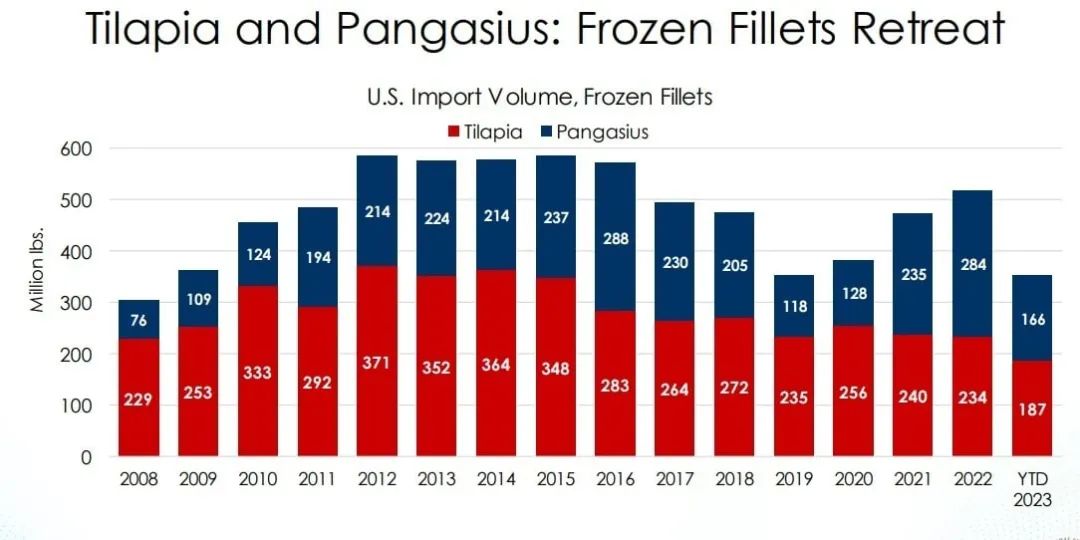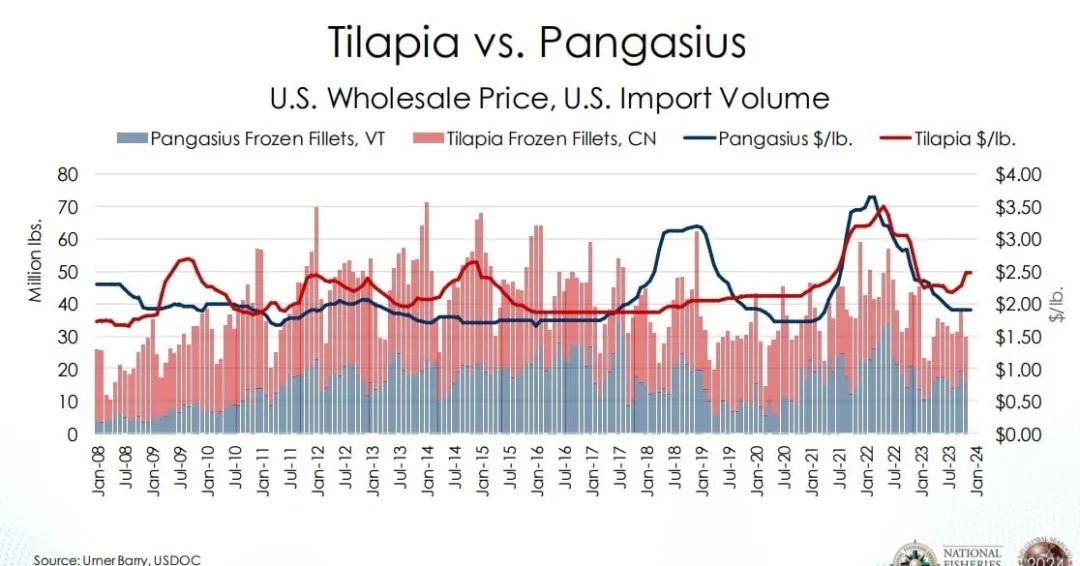Us imports of tilapia and basa both declined
In 2023, the overall market for imported seafood in the United States declined, with tilapia and basa fish, as two fairly cheap products, importing less.
According to the National Oceanic and Atmospheric Administration (NOAA), the United States imported 84,822 tons of frozen tilapia fillets in the first 11 months of 2023, 13% more than basa fish (75,293 tons).
Tilapia imported into the United States is mainly produced in China, basa fish from Vietnam, tilapia and basa fish in the past decade in the United States restaurant and retail market to form a peer competition. In 2016, basa imports exceeded tilapia imports for the first time. In the early days of the COVID-19 pandemic, tilapia enjoyed a relatively stable supply and Basa caught up, surpassing tilapia again in 2022.
However, the competitive relationship between the two fish has reversed again in 2023, with a sharp decline in imports of basa fish and a slight decline in tilapia.

Speaking at the Global Seafood Market Conference (GSMC), Lorin Castiglione, an analyst at Urner Barry (UB), a US food price portal, said: "Overall, global tilapia is growing at an annual rate of around 5.4%, and although the growth rate has slowed somewhat in 2020 due to the pandemic, production growth has continued. Tilapia production is expected to reach 7 million tons in 2024, 5% increase over 2023 and 13% increase over the average of the last five years."
In the U.S. wholesale market, the price difference between tilapia and basa is not too great. The price of frozen tilapia has fallen to about $2.50/lb, and tilapia is $0.50/lb higher than Basa.






